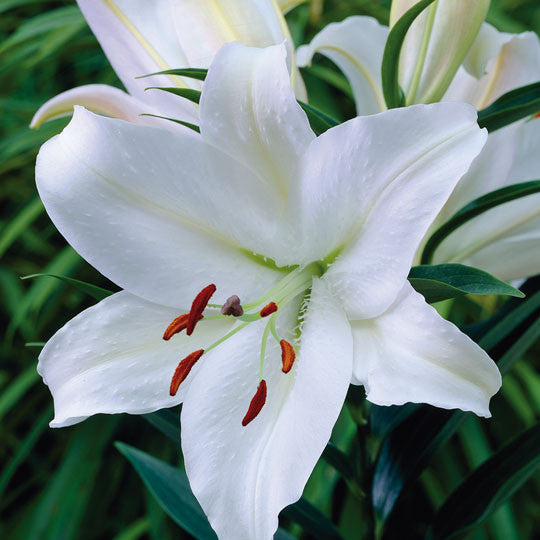Ideal for GARDEN and CONTAINER PLANTING
Hardy Lilies Nova Zembla
Lilies will bring beauty, color and fragrance to your garden for many years; they only require you to plant them in the right place and provide for their simple needs. Choose a well-drained location with at least half a day of sunshine. If it’s too shady, the stems will stretch and lean towards the sun. Lilies love full sun! For best effect, plant lilies in groups of three or five identical bulbs.
- Planting Location: Sun-Semi Shade
- Planting: January-May after Frost
- Planting Depth: 5 inch (12.5 cm)
- Planting Distance: 8 inch (20 cm)
- Flowers In: July-September
- Flowering Height: Approx. 40 inch (100 cm)
How to Grow
Easy to Grow:
1. Select an area with full sun
2. Dig a hole 5 inches (12,5 cm) deep
3. Place the bulb in the hole, with pointed side up
4. Space bulbs 8 inches (20 cm) apart
5. Cover with soil and water thoroughly
Planting Tips:
Plant in groups of 5 or more, in well-drained soil. Bulbs will benefit from a handful of compost added to the planting holes.

Search code: TG814


